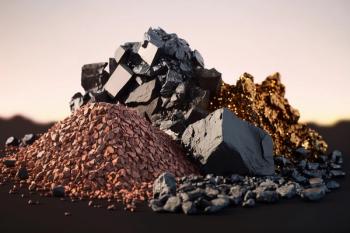
A recent study conducted by researchers from Northwestern Polytechnical University explored how to improve laser-induced breakdown spectroscopy (LIBS) for analyzing complex mineral samples

A recent study conducted by researchers from Northwestern Polytechnical University explored how to improve laser-induced breakdown spectroscopy (LIBS) for analyzing complex mineral samples

A new study demonstrates that infrared spectroscopy combined with chemometric modeling offers a fast, cost-effective way to classify plant-based milk alternatives and detect compositional variability, particularly in almond beverages.


This Icons of Spectroscopy Series article features Infrared pioneer Earle Keith Plyler (1897–1976), who transformed molecular spectroscopy—building precision techniques, reference data, and instruments that set enduring methods and standards at the National Bureau of Standards (NBS, now NIST). As a teacher and mentor, he established a generation of leaders in molecular spectroscopy.

The Winter Conference on Plasma Spectrochemistry will convene in Tucson, Arizona, from January 11–17, 2026.
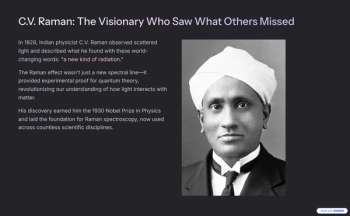
The Icons of Spectroscopy series shines a spotlight on the pioneers whose work laid the foundation for modern analytical science.

In a recent review article, a team of researchers from Shanghai Jiao Tong University explored how to improve the monitoring of drugs and metabolites in biomedical research and clinical settings.
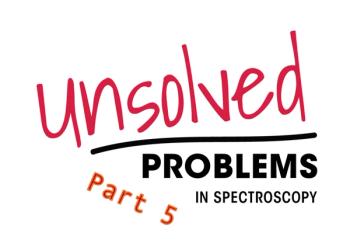
This tutorial contrasts classical analytical error propagation with modern Bayesian and resampling approaches, including bootstrapping and jackknifing. Uncertainty estimation in multivariate calibration remains an unsolved problem in spectroscopy, as traditional, Bayesian, and resampling approaches yield differing error bars for chemometric models like PLS and PCR, highlighting the need for deeper theoretical and practical solutions.

Learn how to troubleshoot FT-IR spectroscopy. From noisy spectra to ATR errors, discover four common FT-IR problems and simple fixes.

Top articles published this week include a video about the structural complexity of polyethylene, a news story about using near-infrared (NIR) and X-ray fluorescence (XRF) to classify coal types, and a look at microplastic analysis.

This explainer video highlights how spectroscopic sensors can help improve health monitoring applications.

Researchers from Brazil have developed an improved method combining infrared and Raman spectroscopic techniques to better identify and characterize microplastics. This integrated approach enhances accuracy in distinguishing various polymer types and provides refined spectral analysis crucial for environmental studies.

This explainer video highlights how spectroscopy is being integrated with artificial intelligence to improve detection accuracy of microplastics.
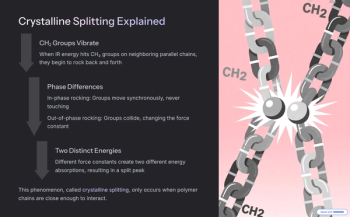
Why polyethylene’s IR spectrum splits—unveiling crystallinity, side chains, and polymer structure in HDPE, LDPE, and LLDPE.

A recent study demonstrated that UV–visible (UV-vis) spectroscopy combined with machine learning (ML) can provide a fast, cost-effective, and automated method for detecting biological contamination in microalgae cultures.

Raman spectroscopy, combined with computational modeling and machine learning, shows strong potential for distinguishing PFAS compounds, offering a promising new framework for environmental monitoring and contamination analysis.

Spectroscopy is increasingly being used in cultural heritage studies. We discuss spectroscopy's evolution in this field.

A new study investigates how colorants embedded in microplastics (MPs) interfere with Raman spectroscopy, one of the key tools used to identify microplastic particles. The research details how fluorescence from these additives complicates spectral analysis, underscoring challenges in environmental microplastic detection.

A new review article highlights how Explainable Artificial Intelligence (XAI) can enhance transparency, trust, and innovation in agricultural spectroscopy, paving the way for smarter and more sustainable food quality assessment.

A new study highlights terahertz (THz) metamaterials as a promising non-invasive, highly sensitive technology for improving food safety testing in agriculture.

Researchers have developed a novel approach to quantify microplastics in water environments by combining Raman spectroscopy with convolutional neural networks (CNN). This integrated method enhances the accuracy and speed of microplastic identification, offering a promising tool for environmental monitoring.

A recent study found that coffee, red wine, and Coca-Cola significantly reduce the hardness and alter the chemical structure of dental resin composites.

Researchers at the National Research Council (CNR) in Rome have developed a compact spectroscopic sensor and machine learning system that can accurately recognize beverages in smart cups or glasses.
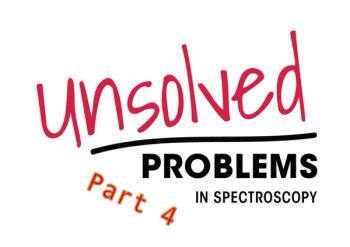
This tutorial investigates the persistent issue of sample heterogeneity—chemical and physical—during spectroscopic analysis. Focus will be placed on understanding how spatial variation, surface texture, and particle interactions influence spectral features. Imaging spectroscopy, localized sampling strategies, and adaptive averaging algorithms will be reviewed as tools to manage this problem, as one of the remaining unsolved problems in spectroscopy.

This tutorial guides spectroscopy practitioners through the integration of Raman spectroscopy and machine learning (ML) techniques for detecting microplastics (MPs) in aquatic and environmental samples.
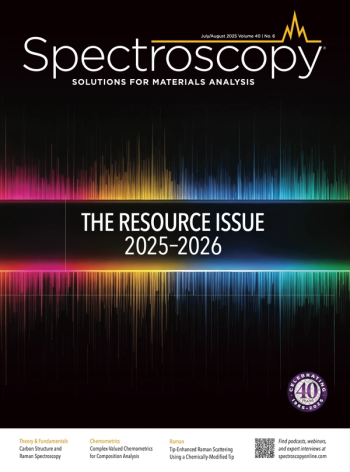
Click here to access the Spectroscopy July/August 2025 North America PDF in an interactive format.

A recent study presented an AI-enhanced NIRS-XRF fusion spectroscopy method that significantly improves coal classification and quality prediction for coking enterprises.

A new review in Digital Discovery by Yongqiang Cheng of MIT and Oak Ridge National Laboratory highlights how AI-driven methods are changing how we study atomic vibrations.

This Icons of Spectroscopy Series article features E. Bright Wilson, a pioneer of chemical physics. Wilson’s contributions to infrared, Raman, and microwave spectroscopy provided the theoretical and practical foundation for analyzing molecular structure and dynamics. As a revered professor at Harvard and coauthor of landmark texts, he mentored nearly 150 students and researchers, leaving a lasting legacy of scientific excellence and integrity.
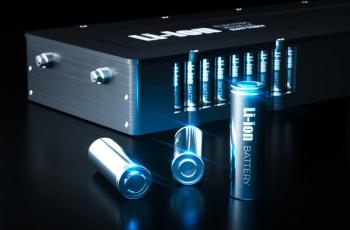
In this column, we will describe what is known about the structures of these materials and how Raman spectroscopy can characterize them.